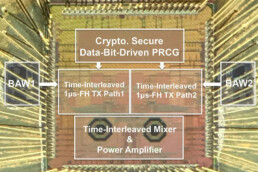MIT and SUSTech announce Centers for Mechanical Engineering Research and Education at MIT and SUSTech
Two centers located in Shenzhen, China, and Cambridge, Massachusetts, will facilitate collaborative research opportunities.
MIT and the Southern University of Science and Technology (SUSTech) in Shenzhen, China, have announced the launch of the Centers for Mechanical Engineering Research and Education at MIT and SUSTech. The two centers, which will be located at MIT and SUSTech, aim to foster research collaborations and inspire new approaches to engineering education.
At a ceremony on June 15, Anantha P. Chandrakasan, dean of engineering at MIT and the Vannevar Bush Professor of Electrical Engineering and Computer Science, and Zhenghe Xu, dean of engineering at SUSTech, signed an agreement establishing the two centers. They were joined by faculty from both MIT’s Department of Mechanical Engineering and SUSTech as well as representatives from the local Shenzhen government.
“This research and educational collaboration will give MIT’s faculty and students the opportunity to benefit from a wider range of research and engage in a discussion on how to best train mechanical engineers,” says Gang Chen, the Carl Richard Soderberg Professor of Power Engineering and head of the Department of Mechanical Engineering, who will serve as faculty director for the MIT center. Professor Zhenghe Xu will serve as faculty director of the SUSTech center.
Novel transmitter protects wireless data from hackers
Device uses ultrafast “frequency hopping” and data encryption to protect signals from being intercepted and jammed.
Today, more than 8 billion devices are connected around the world, forming an “internet of things” that includes medical devices, wearables, vehicles, and smart household and city technologies. By 2020, experts estimate that number will rise to more than 20 billion devices, all uploading and sharing data online.
But those devices are vulnerable to hacker attacks that locate, intercept, and overwrite the data, jamming signals and generally wreaking havoc. One method to protect the data is called “frequency hopping,” which sends each data packet, containing thousands of individual bits, on a random, unique radio frequency (RF) channel, so hackers can’t pin down any given packet. Hopping large packets, however, is just slow enough that hackers can still pull off an attack.
Now MIT researchers have developed a novel transmitter that frequency hops each individual 1 or 0 bit of a data packet, every microsecond, which is fast enough to thwart even the quickest hackers.

